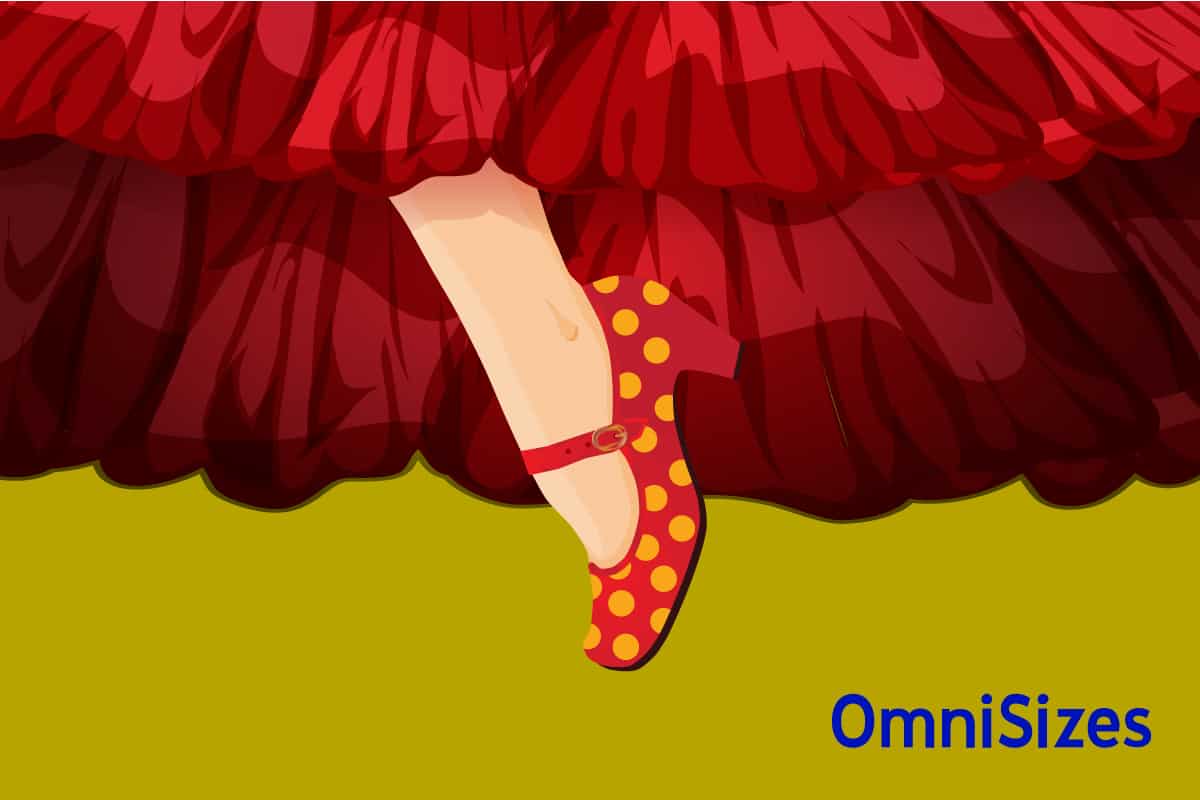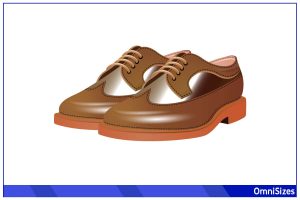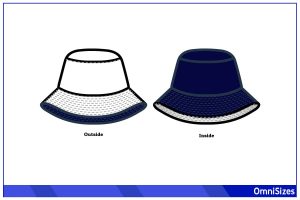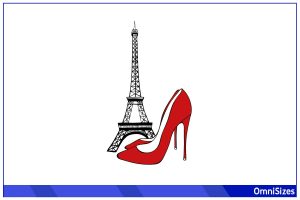Spain is known for many things, from its rich history to its mouthwatering cuisine, but its footwear industry holds a special place in the world of fashion. However, while the allure of Spanish shoes is undeniable, navigating their size chart can be a bit tricky for those unfamiliar with it.
This guide will explore the Spanish shoe size system, including basic size ranges for men, women, and children.
Basics of the Spanish Shoe Size System
Spain is a hub of fashion and craftsmanship and has a unique approach to shoe sizes. While many countries have their own methods of sizing, Spain follows a system that’s rooted in tradition, yet tailored for modern footwear.
The Brannock System vs. Spain’s Shoe Size
For many, the Brannock Device—that metal contraption at shoe stores—is the go-to for measuring feet. Originating from the US, the Brannock Device offers sizes based on the foot’s length in inches.
However, Spanish sizes work differently. They use the metric system, primarily centimeters, to determine shoe sizes. So, a shoe size in Spain essentially represents the length of the inside of the shoe in centimeters.
Another distinction lies in the increments between sizes. While the Brannock System has half-sizes for closer fits, Spanish shoes often go up in full-size jumps.
Shoe Width in Spain
Besides length, the width of a shoe is pivotal for comfort. In Spain, widths are often categorized as narrow, standard, or wide. However, unlike length, there isn’t a universally standardized measurement for width.
Some brands might use alphabets like N (Narrow), M (Medium or standard width), and W (Wide). Others may offer width dimensions in centimeters. When in doubt, opt for trying shoes on or measuring the widest part of your foot for reference.
Span Shoe Size Chart
Shoe shopping can be a tad overwhelming, especially when you throw international sizes into the mix. The following sections will explore common shoe sizes and their measurements for men’s, women’s, and children’s shoes in Spain.
Men’s Shoe Size in Spain
| Shoe Size | Length | Estimated US Equivalent |
| 35.5 | 22.8 cm | |
| 37 | 23.5 cm | |
| 38 | 24.1 cm | |
| 39 | 24.8 cm | 6 |
| 40.5 | 25.4 cm | 7.5 |
| 41 | 25.7 cm | 8 |
| 42 | 26.0 cm | 9 |
| 42.5 | 26.3 cm | 9.5 |
| 43 | 26.7 cm | 10 |
| 44 | 27.0 cm | 11 |
| 44.5 | 27.3 cm | 11.5 |
| 45 | 27.6 cm | 12 |
| 46 | 27.9 cm | 13 |
| 47 | 28.6 cm | 14 |
| 48 | 29.2 cm |
Women’s Shoe Size in Spain
| Shoe Size | Length | Estimated US Equivalent |
| 35 | 22.8 cm | 4 |
| 36 | 23.5 cm | 5 |
| 37 | 24.1 cm | 6 |
| 38 | 24.8 cm | 7 |
| 39 | 25.4 cm | 8 |
| 40 | 26.0 cm | 9 |
| 41 | 26.7 cm | 10 |
| 42 | 27.3 cm | 11 |
Children’s Shoe Size in Spain
| Shoe Size | Length | Estimated US Equivalent |
| 18 | 10.5 to 11.1 cm | 3 |
| 19 | 11.2 to 11.8 cm | 4 |
| 20 | 11.9 to 12.5 cm | 5 |
| 21 | 12.6 to 13.2 cm | 6 |
| 22 | 13.3 to 13.9 cm | 7 |
| 23 | 14.0 to 14.5 cm | 8 |
| 24 | 14.6 to 15.2 cm | 8 |
| 25 | 15.3 to 15.9 cm | 9 |
| 26 | 16.0 to 16.6 cm | 9.5 |
| 27 | 17.0 to 17.6 cm | 10 |
| 28 | 17.6 to 18.2 cm | 11 |
| 29 | 18.3 to 18.9 cm | 12 |
| 30 | 18.6 to 19.2 cm | 13 |
| 31 | 19.3 to 19.9 cm | 13 |
| 32 | 20.0 to 20.6 cm | 1 |
| 33 | 20.7 to 21.6 cm | 2 |
| 34 | 21.4 to 22.0 cm | 3 |
| 35 | 22.1 to 22.7 cm | 3 |
| 36 | 22.4 to 23.4 cm | 3.5 |
| 37 | 23.5 to 24.1 cm | 4.5 |
| 38 | 23.8 to 24.5 cm | 5.5 |
| 39 | 24.5 to 25.1 cm | 6.5 |
| 40 | 24.9 to 25.5 cm | 7 |
| 41 | 25.3 to 25.9 cm | 725 |
| 42 | 25.9 to 26.2 cm | 8.5 |
| 43 | 26.3 to 27.3 cm | 9.5 |
Key Differences Between Spanish and Other European Shoe Sizes
People may assume European shoe sizes to be uniform across the continent, but variations do exist.
Comparing Spanish and Italian Shoe Sizes
- Size Range: Generally, Spanish shoe sizes tend to run from 35-45, whereas Italian sizes might start at 34 and go up to 46. This subtle difference means that a shoe size 35 in Spain could be 34 in Italy. A rule of thumb is to subtract 1 from the Spanish shoe size to get the Italian shoe size.
- Fit: Spanish shoes are often designed with a wider fit in mind, accommodating broader foot shapes. Italian shoes, particularly in high-end fashion brands, tend to be narrower and snugger.
- Measurement Basis: Both countries base their shoe sizes on the length of the foot in centimeters, but the scales can differ. For instance, a 38 in Spain might translate to a foot length of 24.3 cm, while in Italy, it might be 24.5 cm.
Contrasting Spanish and French Shoe Sizes
- Sizing Increments: Spanish shoes generally have a size increment of about 0.5-0.7 cm. French shoes, on the other hand, use tighter increments, often around 0.5 cm. This means the range between two sizes is smaller in France.
- Numeric Values: A size 40 shoe in Spain might be considered a 41 in France due to these incremental differences.
- Style and Design Considerations: French shoes often come with a blend of elegance and comfort, and this could affect the overall fit. While both Spanish and French footwear are designed to be comfortable, Spanish shoes tend to have a more relaxed fit.
Spanish vs. German Shoe Sizes
- Numeric Scale: German shoe sizes usually run parallel with centimeter measurements. So, a size 26 would typically fit a foot that’s 26 cm long. This direct correlation makes it a bit more straightforward than the Spanish system, where the numeric size doesn’t match the foot’s length.
- Width Variations: German shoes often come with width specifications ranging from narrow (N) to extra-wide (XW). This can make a difference when choosing the right fit, especially if someone has wider or narrower feet.
- Branding: Popular German shoe brands might offer dual sizing on their products, showcasing both the German size and its European counterpart. This can be helpful but also confusing if the European counterpart they reference isn’t aligned with the Spanish size.






